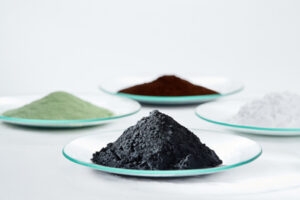Global filler markets forecast with annual growth rate of 4.8 percent
Konstanz, Germany – Without stones, there’s no energy transition: mineral fillers help make cars lighter, bioplastics more durable, and wind turbines and solar plants more weatherproof. Insoluble additives make many materials, especially engineering plastics, cheaper and suitable for a use in demanding applications. Ceresana has analyzed the filler industry for the sixth time already. The market researchers expect the global filler market to grow at an average annual rate of 4.8%: Demand for natural calcium carbonate (GCC), precipitated calcium carbonate (PCC), kaolin, talc, wollastonite, mica, carbon black and other fillers is expected to reach a volume of more than 80 million tons by 2030.
High-performance fillers can specifically change material properties, such as improving strength and stiffness, but also, for example, make packaging films easier to remove, increase the thermal conductivity of adhesives, regulate the temperature of acrylic glass sheets or store light in colors and release it again in the dark. A filler trend: highly-filled compounds with tailor-made properties are increasingly being produced for specific customers. The most important sales market for fillers is plastics. This area currently accounts for around 28% of global consumption. Ceresana expects steady growth in demand of 3.1% per year for elastomers, which comes in as the second-largest application area due to vehicle tires. Despite digitalization, the paper industry also remains a major customer: fillers make paper opaque, white and smooth.
Lime dominates the global filler market: Natural calcium carbonate (GCC) is the most commonly used filler with a market share of around 35%. Ceresana expects an annual growth rate of 2.3% for GCC until 2030. The plastics industry is the largest consumer of GCC by far, followed by paints, coatings and paper. Another top-selling filler is precipitated calcium carbonate (PCC), which has many properties identical to GCC. PCC is most commonly used in the production of paper, followed by its use in paints and coatings. Carbon black (industrial carbon black) is the second most widely used filler, with global demand at 11.4 million tonnes, behind GCC and before PCC. The most important customer for carbon black is the rubber industry, which uses carbon black as a reinforcing filler that significantly increases the abrasion resistance of tire rubber, for example.
There are clear regional differences in the sales markets for fillers: While in Western Europe, the paper industry accounts for 31% of total filler consumption, in Asia, it is only 18%. Conversely, manufacturers of elastomer products in Asia achieve a filler market share of around 31% – in Western Europe, it is only 18%. In this new market study, Ceresana examines the regional and country-specific characteristics of the demand for fillers for different application areas in detail.

